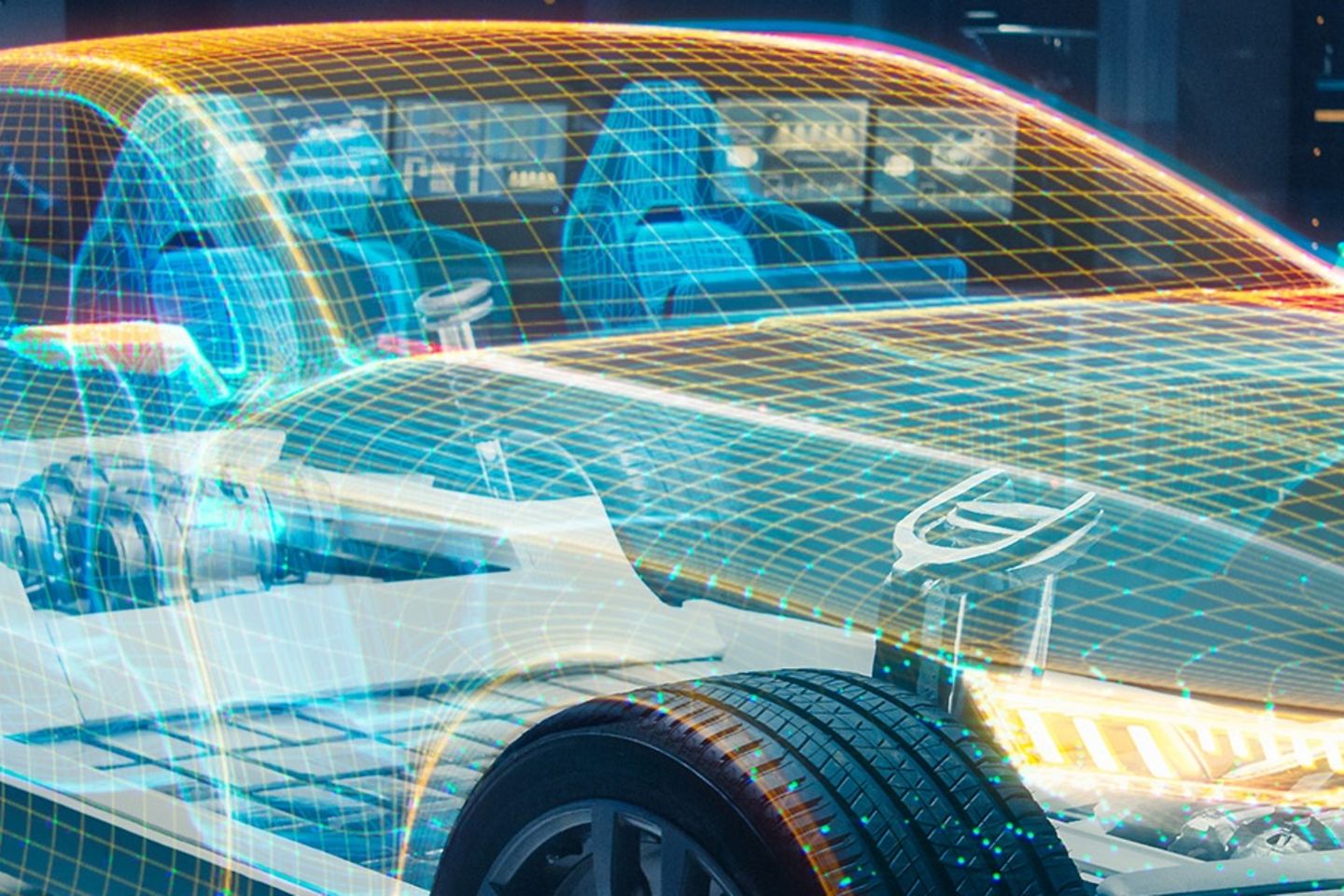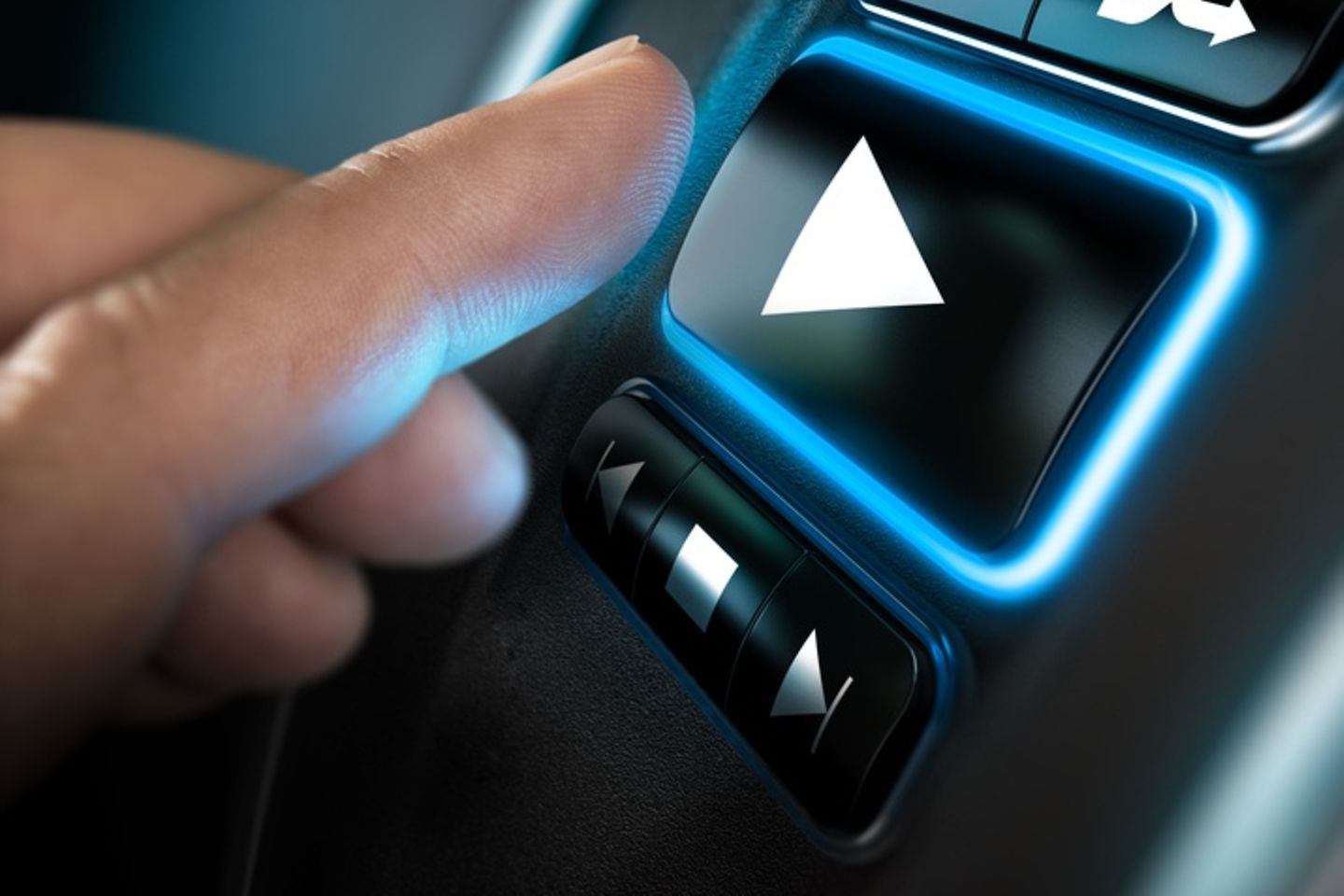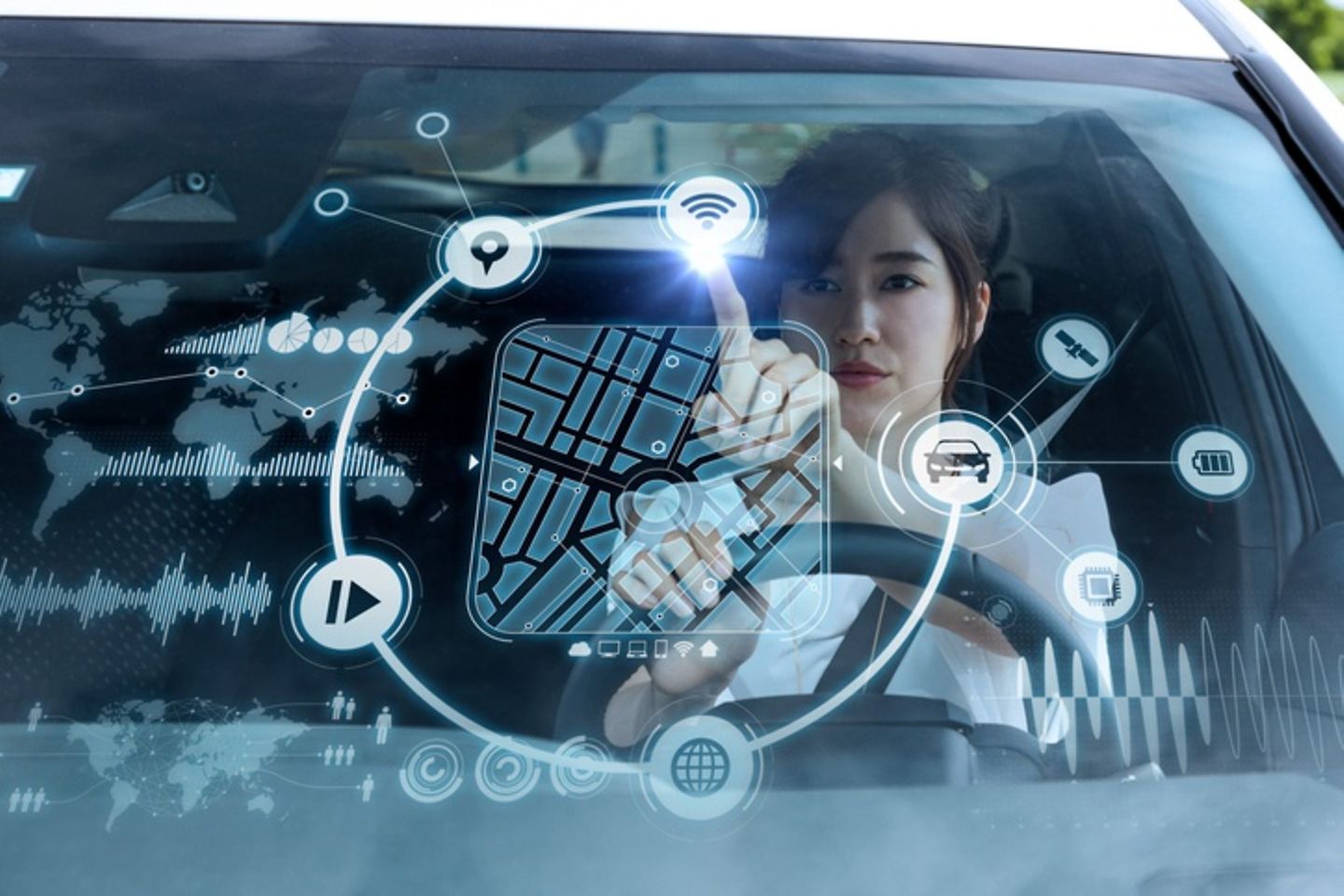
The automotive industry is becoming increasingly reliant on digital functions in cars. The industry wants to offer its users a novel automotive experience. The car is becoming a living space – with all the features that people expect in their living environment. Six trends will be important for user experience in the future. Join us on a virtual journey with the car of the future.

In earlier times, taking a family trip – let's say on vacation – required meticulous planning, which sometimes overshadowed packing your suitcase. Do we have enough to read? Games? What about the music? Have we thought about snacks? Families were brought to the verge of a nervous breakdown.
If we are being honest, the car has always been more than just a means of transport – sharp minds have determined that we spend an average of over four years of our lives in a car. Almost half of those with family and friends. Only the program of entertainment on the road was limited: besides identifying license plates and driving to rest stops, I remember soothing grumbling children in the back seat. At some point the walkman came along, followed by the digital transformation. Today we dream of vehicles that take us from A to B and offer each passenger their own films.
So we can see that the car is more than just a metal box with four wheels that moves us and our luggage around – just as a smartphone is not just for making phone calls. The car is a living space which, if we trust the above figure, we spend about five percent of our lives in. It is also an Internet-capable device that connects passengers to their online ecosystems.
Depending on their temperament, the people I talk to react to these kinds of proclamations with a frown or with sheer euphoria. Of course, much of what we hope for – starting with autonomous driving – is still a dream, but every month we move closer to the car of the future, step by step.
I believe that there are several trends in the industry that are relevant to the automotive industry alongside electromobility, automated driving, and alternative propulsion systems:
Since cars get stolen, we rely on our car keys. In recent years, these have seen dramatic developments for cars. From an opener and ignition key to a device that identifies us with the car. Nevertheless, time and again we find ourselves searching for our keys. Biometric identification could put an end to this. When I approach the car, it recognizes me – either using facial recognition or by fingerprint – opens the door, and adjusts the car for me. But more than that: it also recognizes that my daughter is in the back seat and my wife is in the passenger seat. And it loads their preferred entertainment program for them in their seats: videos, music, audio books – everything is available as it would be in your own room. I just have to remember to make sure that there are always spare headphones available. Someone always forgets theirs.

Autonomous driving will remain a dream for the next few years, despite the constant development of ever more powerful driving assistants. And as long as that is the case, as the driver I have to pay attention to what is happening around me. V2X functions will help with this in the next few years. The most natural relief for the driver – and already available today – is a voice assistant that helps to operate other functions. While some voice assistants read my e-mails to me and can even answer them, others remind me of the first voice menus for booking travel with the Deutsche Bahn: "I didn't quite catch that. Please repeat the destination..." – this is still a long way off from natural conversation, such as that seen with K.I.T.T. in Knight Rider. Future digital onboard assistants will have to become digital co-drivers, but to do so, development will have to pass through a few more stages of maturity: assistants have to monitor the driver, identify their emotions, and...
...a butler for the car marketplace. A marketplace? Yes. The integration of marketplaces is a response consistent with the idea of the car as a living space. Market researchers such as Frost & Sullivan believe that in-car marketplaces of this kind have a market volume in the billions. The automotive industry offers passengers a shopping portal during the journey via an in-car marketplace. This allows passengers to browse online shops and – provided there is in-car payment – even make direct purchases. Typically, however, the in-car marketplace will not only display Amazon, eBay, and the like, but will also integrate services typical for travel or cars. For example, pre-ordering a cappuccino and croissants at a pit stop along the way, reserving an e-charging station for your e-car, or ordering your weekly shopping on the way home from the office. The offers of companies such as petrol station chains could be a useful addition to this marketplace.
Ordering options will also include in-vehicle services. The automotive industry already offers over the air updates. This function of Connected Cars can also be used for additional services. The car could be tuned for specific deployment scenarios (uphill trip, moving house) or – to come back to our holiday scenario – temporarily provided with additional foreign maps or intelligent route guidance.
The car as living space – that means access to all functionalities as we experience them at home. This represents a huge opportunity for the automotive industry. Namely, to utilize the time that users spend engaging with their products to generate additional business and position themselves as an integral part of the virtual world. The automotive industry has an excellent starting position for this. But manufacturers must integrate a powerful technology stack: from onboard technology to connectivity, back end, marketplaces, and various touchpoints. In the next article in this series, I will show what technical prerequisites are required to make our car of the future a reality. Until then, I will continue to dream of the perfect road trip – when Corona is a thing of the past.